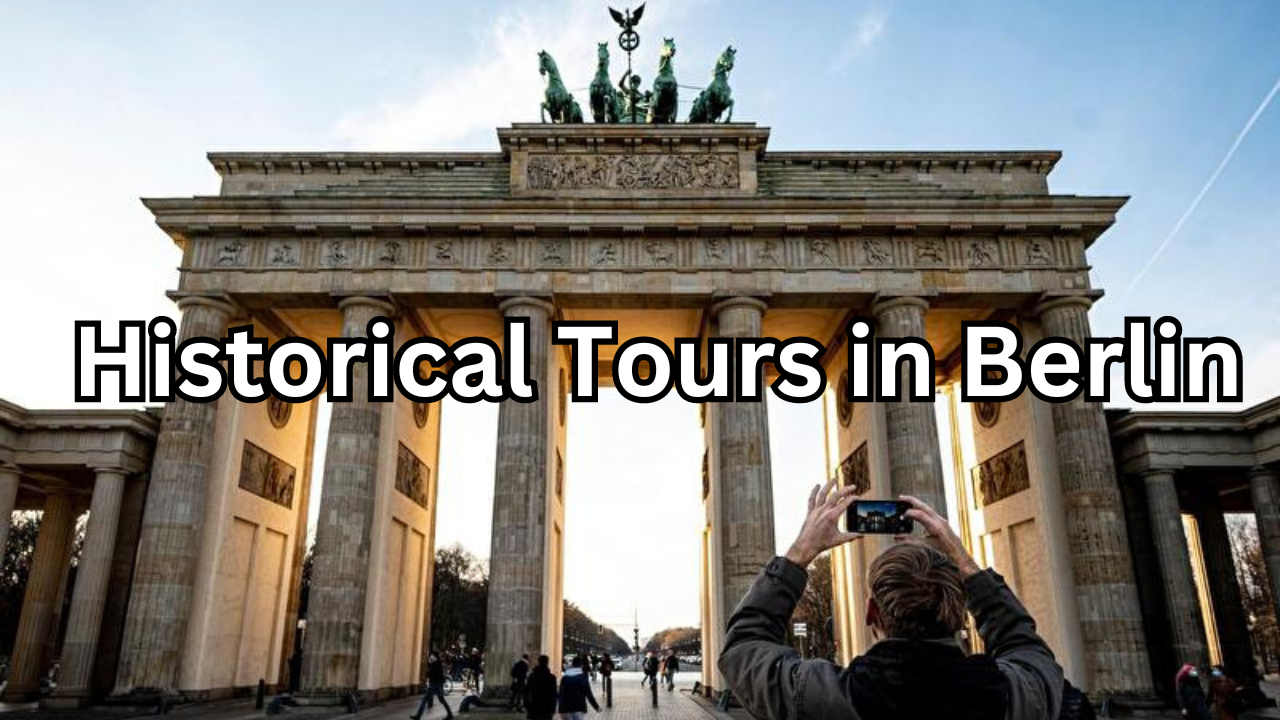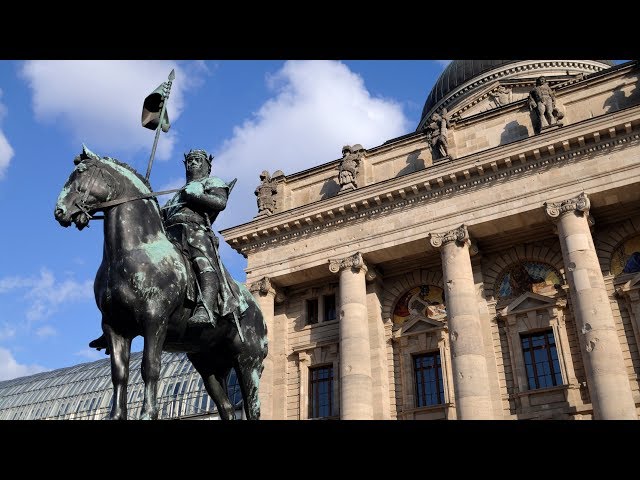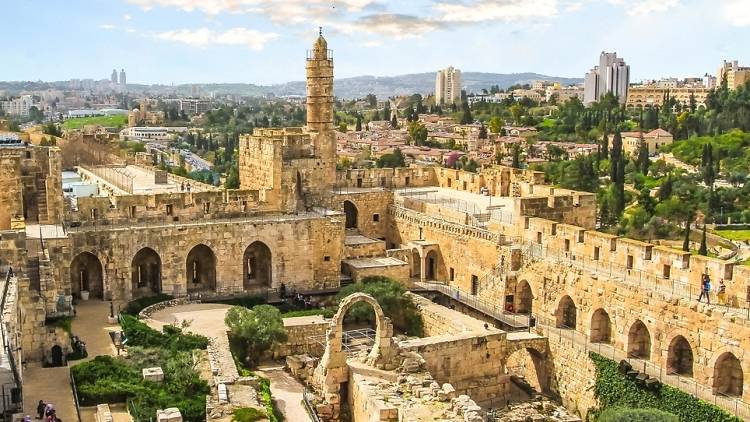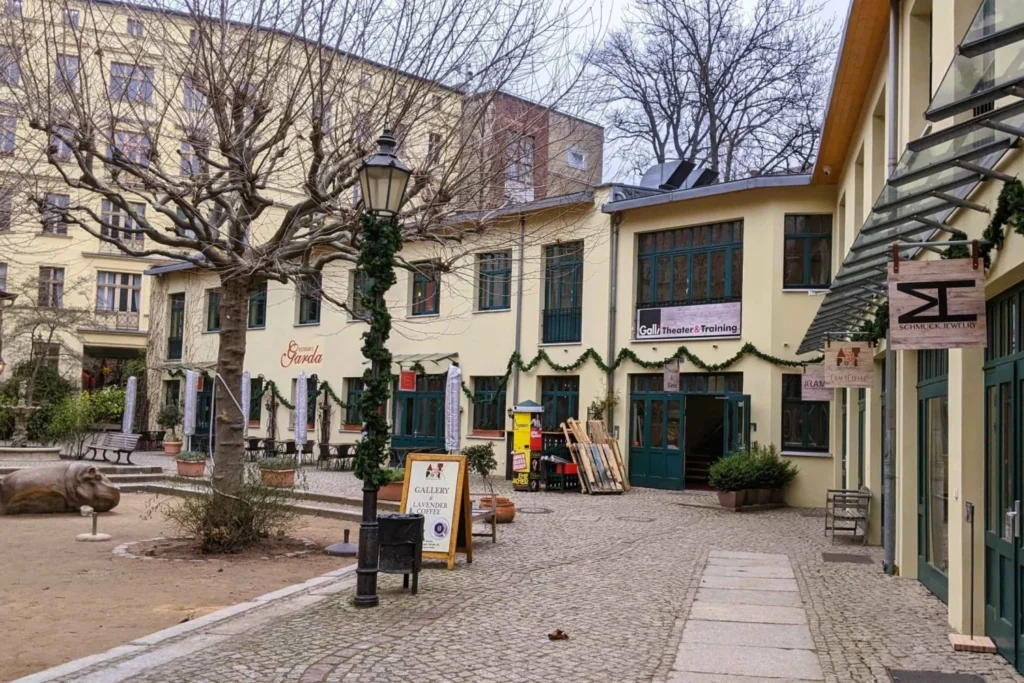
Table of Contents
Historical tours in Berlin offer captivating journeys through the city’s tumultuous past, providing profound insights into pivotal periods and events. From immersive Third Reich and Nazi History Tours that explore sites like Sachsenhausen concentration camp and the Holocaust Memorial, to Cold War and Berlin Wall Tours tracing the division of the city and Checkpoint Charlie’s iconic checkpoint, each tour unveils layers of history. WWII History Tours delve into the aftermath of the war, while Jewish History Tours shed light on Berlin’s Jewish heritage through visits to the Jewish Museum and memorials. Architecture and Urban Planning Tours showcase Berlin’s diverse architectural styles, from historic landmarks like the Brandenburg Gate to modern marvels like Potsdamer Platz. Museum Tours offer curated experiences in institutions like the DDR Museum and the German Historical Museum. Finally, Historic Neighborhood Walks bring history to life, revealing the stories embedded in neighborhoods like Mitte, Kreuzberg, and Charlottenburg. These tours collectively paint a vivid picture of Berlin’s complex and captivating historical narrative.
Third Reich and Nazi History Tours:
These tours focus on the rise of Adolf Hitler and the Nazi regime, exploring sites like the former Nazi rally grounds at Nuremberg, Sachsenhausen concentration camp, and the Memorial to the Murdered Jews of Europe (Holocaust Memorial) in Berlin. They delve into Nazi ideology, propaganda, and the consequences of Nazi rule, providing a sobering reminder of one of the darkest periods in history.
Cold War and Berlin Wall Tours:
These tours are centered around Berlin’s role in the Cold War era, highlighting sites such as the Berlin Wall Memorial, Checkpoint Charlie, and the Stasi Museum. They examine the division of Berlin into East and West, the tensions between the United States and the Soviet Union, and the experiences of residents living in a divided city, offering a glimpse into a time of political and ideological conflict.
WWII History Tours:
These tours explore Berlin’s history during World War II, visiting sites such as the Topography of Terror museum, the Reichstag building, and the Soviet War Memorial in Treptower Park. They discuss the impact of the war on Berlin, including the bombings, battles, and eventual destruction, as well as the city’s reconstruction and post-war developments.
Jewish History Tours:
These tours focus on Berlin’s Jewish heritage, visiting places like the Jewish Museum, Jewish memorials, and former Jewish neighborhoods. They discuss the rich cultural and intellectual contributions of the Jewish community to Berlin before the Holocaust, as well as the tragic events of the Holocaust and the post-war revival of Jewish life in the city.
Architecture and Urban Planning Tours:
These tours showcase Berlin’s diverse architectural styles and urban development. They include visits to iconic landmarks like the Brandenburg Gate, Berlin Cathedral, and modern structures such as the Sony Center. Discussions may cover the evolution of Berlin’s architecture over time, urban planning challenges, and the city’s efforts to preserve its historic and modern architectural heritage.
Museum Tours:
Berlin is home to numerous museums dedicated to various aspects of its history, such as the DDR Museum, the German Historical Museum, and the Berlin Wall Museum at Checkpoint Charlie. Museum tours provide in-depth explorations of specific historical periods, themes, and artifacts, offering a comprehensive understanding of Berlin’s past.
Historic Neighborhood Walks:
These tours take visitors on guided walks through historic neighborhoods like Mitte, Kreuzberg, and Charlottenburg. They highlight significant buildings, monuments, and stories associated with each area, providing a more intimate and localized perspective on Berlin’s history and cultural heritage.
Each type of historical tour in Berlin offers a unique and immersive experience, allowing visitors to delve deep into the city’s complex and fascinating history from different angles.
Third Reich and Nazi History Tours

In Berlin encompasses a profound exploration of one of the darkest periods in human history. These tours typically include visits to significant sites such as Sachsenhausen concentration camp, a haunting reminder of the atrocities committed during the Holocaust, and the Holocaust Memorial, a somber tribute to the millions of lives lost.
- Sites visited: The tour would likely start with Sachsenhausen concentration camp, located just outside Berlin. This site provides a sobering glimpse into the brutal reality of Nazi persecution, with preserved barracks, guard towers, and a museum detailing the camp’s history. The Holocaust Memorial, located in central Berlin, features a field of over 2,700 concrete slabs of varying heights, creating a disorienting and reflective space for visitors.
- Topics covered: The tour delves into various aspects of Nazi ideology, examining the propaganda, racial theories, and totalitarian control that defined the regime. It also explores the consequences of Nazi rule, including the persecution and extermination of millions of Jews, Roma, disabled individuals, and others deemed “undesirable” by the regime. Discussions may touch on the Nuremberg Laws, Kristallnacht, the Final Solution, and the aftermath of the Holocaust, shedding light on the profound impact of Nazi atrocities on individuals, communities, and the world at large.
These tours aim to educate, commemorate, and ensure that the horrors of the Nazi era are never forgotten, fostering dialogue and reflection on humanity’s capacity for both immense evil and resilience.
Cold War and Berlin Wall Tours
Cold War and Berlin Wall Tours in Berlin offer a captivating journey through a period defined by political tensions, ideological conflicts, and the physical division of a city. These tours typically include visits to key sites that highlight the stark realities of the Cold War era.
- Sites visited:
- Berlin Wall Memorial: This site offers a poignant look at the Berlin Wall’s history, featuring preserved sections of the wall, watchtowers, and a documentation center that provides insight into the lives of those affected by the division.
- Checkpoint Charlie: One of the most famous border crossings between East and West Berlin during the Cold War, Checkpoint Charlie is now a museum that explores escape attempts, espionage, and the broader context of the Cold War in Berlin.
- Themes explored:
- Division of Berlin: Tours delve into the physical and ideological division of Berlin into East and West, examining the construction of the Berlin Wall in 1961 and its impact on the city’s residents, families, and communities.
- Cold War tensions: The tours explore the broader geopolitical tensions between the United States and the Soviet Union, the establishment of East Germany (GDR) and West Germany (FRG), and the proxy conflicts and nuclear fears that characterized the Cold War era.
These tours provide a deeper understanding of the complex dynamics that shaped Berlin during the Cold War, offering insights into the human stories, political strategies, and lasting legacies of this tumultuous period in history.
WII History Tours
World War II Historical Tours in Berlin offer a captivating journey through the city’s wartime experiences, providing a deep dive into the events and aftermath of one of the most significant conflicts in human history. These tours typically include visits to poignant sites such as the Topography of Terror museum, where the atrocities of the Nazi regime are starkly illustrated, and the Soviet War Memorial in Treptower Park, a solemn tribute to the sacrifices made during the Battle of Berlin. Visitors gain insight into the impact of WWII on Berlin, from the devastating bombings and battles to the city’s division into Allied sectors and subsequent reconstruction efforts. Through guided tours, discussions, and historical context, participants gain a profound understanding of the human stories, resilience, and lasting legacies of WWII in Berlin, contributing to a broader appreciation of the complexities of war and its effects on cities and societies.
- Sites visited:
- Topography of Terror museum: This museum is located on the former site of the Gestapo and SS headquarters, offering a comprehensive look at the Nazi regime’s terror apparatus, propaganda, and crimes against humanity.
- Soviet War Memorial in Treptower Park: A striking memorial honoring Soviet soldiers who fought and died in the Battle of Berlin, featuring a large statue of a Soviet soldier holding a child and standing over a defeated Nazi eagle.
- Focus on WWII events and aftermath in Berlin:
- Tours focus on key events of WWII that took place in Berlin, such as the Battle of Berlin in 1945, the bombings that devastated parts of the city, and the eventual surrender and occupation by Allied forces.
- They also explore the aftermath of WWII, including the division of Berlin into Allied sectors, the establishment of East and West Berlin, and the city’s reconstruction efforts in the post-war years.
These tours provide a nuanced understanding of Berlin’s wartime experiences, highlighting the human stories, resilience, and challenges faced by the city and its inhabitants during one of the most turbulent periods in history.
Jewish History Tours

Jewish Historical Tours in Berlin offer a compelling exploration of the city’s rich and diverse Jewish heritage, spanning centuries of cultural, intellectual, and religious contributions. These tours typically include visits to significant sites such as the Jewish Museum, where exhibits chronicle the history, traditions, and challenges faced by Berlin’s Jewish community. Other stops may include Jewish memorials scattered throughout the city, honoring the lives lost during the Holocaust and commemorating the resilience of Jewish culture. Guides provide insights into pre-Holocaust Jewish life in Berlin, highlighting the vibrant neighborhoods, institutions, and personalities that once flourished. Discussions often extend to the tragic events of the Holocaust, the deportation and persecution of Jews, and post-war efforts to revive Jewish life in the city. Through these tours, participants gain a deeper understanding of Berlin’s complex Jewish history, fostering reflection, remembrance, and appreciation for a resilient and enduring cultural legacy.
Jewish History Tours in Berlin encompass a rich exploration of sites and experiences that illuminate the multifaceted aspects of Jewish life, culture, and history in the city.
- Sites visited:
- Jewish Museum: A central highlight of the tour, the Jewish Museum in Berlin is a comprehensive institution that delves into the diverse facets of Jewish history, culture, and identity. Exhibits showcase artifacts, artworks, and narratives spanning centuries, providing a nuanced understanding of Jewish life in Berlin and beyond.
- Jewish memorials: Tours often include visits to Jewish memorials scattered throughout Berlin, such as the Memorial to the Murdered Jews of Europe (Holocaust Memorial) and other smaller memorials dedicated to specific aspects of Jewish history and remembrance. These sites serve as solemn reminders of the Holocaust and the resilience of Jewish communities.
- Exploration of Jewish life, culture, and history in Berlin:
- Guides and experts on these tours provide in-depth insights into the vibrant tapestry of Jewish life that once flourished in Berlin. Discussions may cover topics such as the Golden Age of Jewish culture in the late 19th and early 20th centuries, highlighting the achievements of Jewish artists, intellectuals, and entrepreneurs.
- The tour also delves into the tragic events of the Holocaust, examining the impact of Nazi policies on Berlin’s Jewish population, the deportation and persecution of Jews, and the profound loss experienced during this dark chapter of history.
- Post-war efforts to revive Jewish life in Berlin are also explored, showcasing the resilience, cultural contributions, and ongoing presence of Jewish communities in the city.
Overall, Jewish History Tours in Berlin offer a comprehensive and thought-provoking journey through the complexities of Jewish identity, heritage, and memory, fostering understanding, remembrance, and appreciation for the enduring legacy of Berlin’s Jewish community.
Architecture and Urban Planning Tours

Architecture and Urban Planning Tours in Berlin offer an intriguing exploration of the city’s diverse architectural styles and its dynamic urban development. These tours typically include visits to iconic sites such as the historic Brandenburg Gate, a symbol of Berlin’s past and present unity, and the modern Potsdamer Platz, showcasing contemporary skyscrapers and urban design. Guides provide engaging discussions on the evolution of architectural styles, from neoclassical and baroque landmarks to Bauhaus-inspired buildings and innovative modern structures. They also delve into Berlin’s urban planning history, highlighting the city’s resilience through war and division, its post-reunification transformations, and ongoing efforts in sustainable development. These tours provide a comprehensive perspective on how architecture and urban planning have shaped Berlin’s identity, making them a fascinating exploration for history, design, and city enthusiasts alike.
Architecture and Urban Planning Tours in Berlin provide an immersive exploration of the city’s diverse architectural landscape and the evolution of urban development over time.
- Sites visited:
- Brandenburg Gate: A symbol of Berlin’s unity and history, the Brandenburg Gate stands as an iconic neoclassical monument and a testament to the city’s resilience.
- Potsdamer Platz: This modern urban district showcases contemporary architecture, with skyscrapers, commercial complexes, and public spaces that reflect Berlin’s post-reunification urban planning.
- Discussion of architectural styles and urban development:
- Guides on these tours engage participants in discussions about the various architectural styles represented in Berlin, ranging from historic landmarks like the Brandenburg Gate and Berlin Cathedral (Berliner Dom) with their neoclassical and baroque influences, to modernist structures like the Bauhaus-inspired buildings in the Hansaviertel district.
- The tour delves into Berlin’s urban development, examining the city’s transformation over centuries, from medieval origins to the devastation of World War II and subsequent reconstruction efforts. Topics may include the Berlin Wall’s impact on urban planning, post-reunification architectural projects, and sustainable development initiatives.
- Participants gain insights into the challenges and successes of urban planning in Berlin, including preservation efforts for historic buildings, revitalization of post-industrial areas like the East Side Gallery along the former Berlin Wall, and the integration of modern architecture within a historically rich cityscape.
Through these tours, participants develop a deeper appreciation for Berlin’s architectural heritage, its evolving urban fabric, and the intersection of history, culture, and design that defines the city’s unique character.
Museum Tours
Museum Historical Tours in Berlin offer an enriching and immersive experience into the city’s vast cultural and historical heritage. Visitors can explore a wide range of museums, each offering unique insights into different aspects of Berlin’s history, art, and culture. For instance, the DDR Museum provides a captivating glimpse into life in East Germany, showcasing everyday objects and interactive exhibits that recreate the socialist era. The German Historical Museum offers a comprehensive overview of Germany’s history from ancient times to the present day, highlighting key events, personalities, and artifacts. Additionally, the Berlin Wall Museum at Checkpoint Charlie provides a detailed examination of the Berlin Wall’s history, escape attempts, and the broader context of the Cold War. Other notable museums include the Jewish Museum, the Museum Island with its world-renowned art collections, and the Museum of Natural History. Museum Tours in Berlin cater to diverse interests, providing an educational and engaging exploration of the city’s cultural richness.
Museum Tours in Berlin showcase a wealth of diverse museums, each offering unique insights into specific historical periods and topics, enriching visitors’ understanding of Berlin’s rich cultural heritage.
- Museums featured:
- DDR Museum: This museum offers a captivating glimpse into life in East Germany (GDR), showcasing everyday objects, interactive exhibits, and immersive displays that recreate the socialist era, providing a nuanced understanding of daily life, politics, and culture in the GDR.
- German Historical Museum: One of Berlin’s flagship museums, it offers a comprehensive overview of Germany’s history from ancient times to the present day. Exhibits cover key historical events, influential figures, and societal developments, providing a deep dive into the nation’s complex and diverse past.
- Insights into specific historical periods and topics:
- Museum Tours provide insights into specific historical periods, such as the Cold War era explored in the DDR Museum and the broader context of German history showcased in the German Historical Museum.
- Visitors can learn about significant events, movements, and cultural shifts that have shaped Berlin and Germany, including World War I and II, the Weimar Republic, Nazi Germany, the division and reunification of Germany, and contemporary developments.
- Themes such as politics, society, technology, art, and culture are explored through artifacts, documents, artworks, and interactive displays, offering a multi-faceted view of historical narratives and their impact on Berlin’s identity and global significance.
Museum Tours in Berlin provide an educational and immersive experience, fostering a deeper appreciation for the city’s historical complexities, cultural achievements, and ongoing contributions to global heritage.
Historic Neighborhood Walks
Embarking on Historic Neighborhood Walks in Berlin promises an enriching exploration of the city’s layered history and vibrant culture. These walks often take participants through iconic neighborhoods like Mitte, Kreuzberg, and Charlottenburg, each offering a unique tapestry of architectural gems, historical landmarks, and captivating stories. In Mitte, the heart of historic Berlin, visitors can marvel at landmarks such as the majestic Berlin Cathedral (Berliner Dom), the historic Brandenburg Gate, and the remnants of the Berlin Wall at Bernauer Strasse. Kreuzberg, known for its alternative and artistic flair, showcases a blend of 19th-century architecture, street art, and multicultural communities, with highlights like the East Side Gallery and the vibrant Görlitzer Park. Meanwhile, Charlottenburg boasts elegant avenues, grand palaces such as Charlottenburg Palace, and cultural institutions like the Museum Berggruen. These Historic Neighborhood Walks offer a personalized and immersive experience, allowing participants to uncover hidden gems, local insights, and the rich tapestry of Berlin’s past and present.
Historic Neighborhood Walks in Berlin offer a captivating journey through some of the city’s most iconic and culturally rich districts.
- Neighborhoods explored:
- Mitte: As the central district of historic Berlin, Mitte is home to a wealth of landmarks and historical sites. Visitors can explore the grandeur of Museum Island, home to renowned museums like the Pergamon Museum and the Altes Museum. The district also features the imposing Berlin Cathedral (Berliner Dom), the historic Nikolai Quarter with its cobblestone streets and medieval charm, and remnants of the Berlin Wall at Bernauer Strasse.
- Kreuzberg: Known for its alternative vibe and vibrant cultural scene, Kreuzberg boasts a mix of 19th-century architecture and modern street art. Highlights include the East Side Gallery, a section of the Berlin Wall adorned with colorful murals, and Görlitzer Park, a popular spot for relaxation and local gatherings. Kreuzberg’s multicultural communities, trendy cafes, and lively street markets add to its eclectic appeal.
- Charlottenburg: This elegant district in western Berlin is renowned for its stately avenues, opulent palaces, and cultural institutions. Visitors can admire the beauty of Charlottenburg Palace, a magnificent Baroque palace surrounded by landscaped gardens. The Museum Berggruen showcases a superb collection of modern art, including works by Picasso and Klee. The district also offers shopping delights along Kurfürstendamm and cultural insights at the Kaiser Wilhelm Memorial Church.
- Highlights of historical buildings, monuments, and stories in each area:
- In Mitte, the Berlin Cathedral stands as a symbol of the city’s religious and architectural heritage, while Museum Island presents a treasure trove of art and history. The stories of resilience and division are palpable at Bernauer Strasse’s Berlin Wall Memorial.
- Kreuzberg’s East Side Gallery captures the spirit of freedom and artistic expression, reflecting the turbulent history of the Cold War era. Görlitzer Park’s transformation from railway yards to a vibrant urban oasis reflects the district’s dynamic evolution.
- Charlottenburg’s Charlottenburg Palace and its gardens offer a glimpse into the lavish lifestyle of Prussian royalty, while the Museum Berggruen’s art collection provides a window into modernist movements and cultural shifts.
These Historic Neighborhood Walks unveil Berlin’s diverse tapestry of history, architecture, and cultural influences, inviting visitors to immerse themselves in the stories and legacies that shape the city’s identity.
Choosing the right historical tour in Berlin involves several key considerations to ensure a fulfilling and enriching experience.
A. Consideration of personal interests and preferences: Before selecting a tour, it’s essential to consider your specific interests and preferences. Whether you’re fascinated by WWII history, Cold War politics, Jewish heritage, or architectural marvels, there’s a tour tailored to meet your curiosities. Researching the tour’s focus, itinerary, and themes can help align your interests with the tour experience.
B. Importance of guided tours with knowledgeable experts: Opting for guided tours led by knowledgeable experts can significantly enhance your understanding and appreciation of Berlin’s history. Guides with expertise in the tour’s subject matter can provide context, answer questions, and offer unique insights that deepen your engagement with the historical narratives and sites visited.
C. Tailoring the tour experience to gain a deeper understanding of Berlin’s history: Many tour operators offer options to tailor the experience based on your preferences. Whether you prefer a comprehensive overview of Berlin’s history or a more focused exploration of specific periods or themes, communicating your preferences to the tour provider can help customize the tour to suit your interests. Additionally, interactive elements, multimedia presentations, and hands-on experiences can further enrich your understanding and make the tour experience memorable.
By carefully considering your interests, choosing guided tours with knowledgeable experts, and tailoring the tour experience to align with your preferences, you can maximize your learning and enjoyment while exploring Berlin’s fascinating history and cultural heritage.
Conclusion Historical Tours in Berlin
In conclusion, Berlin offers a rich tapestry of historical tours that cater to diverse interests and curiosities, providing a deep dive into the city’s fascinating past.
A. Recap of the diverse historical tours available in Berlin: From Third Reich and Nazi History Tours to Cold War and Berlin Wall Tours, WWII History Tours, Jewish History Tours, Architecture and Urban Planning Tours, Museum Tours, and Historic Neighborhood Walks, Berlin’s historical tours cover a wide range of themes and periods, ensuring there’s something for everyone to explore and learn from.
B. Encouragement to explore and learn about Berlin’s fascinating past through guided tours: I highly encourage visitors to embark on guided tours to uncover the layers of history, stories, and cultural heritage that define Berlin. Guided tours, led by knowledgeable experts, offer immersive experiences, deep insights, and memorable encounters with historical sites, museums, and neighborhoods. Whether you’re a history enthusiast, an architecture buff, or simply curious about Berlin’s diverse heritage, guided tours provide a structured and engaging way to gain a deeper understanding and appreciation for the city’s complex and captivating past. So, don’t hesitate to explore and learn about Berlin’s fascinating history through these enriching guided tours.
Here you can learn more about Historical Tours in France






